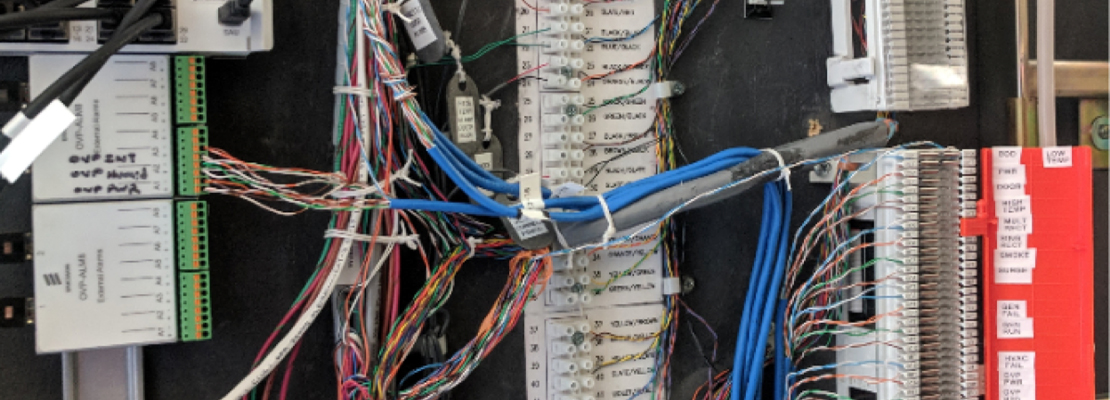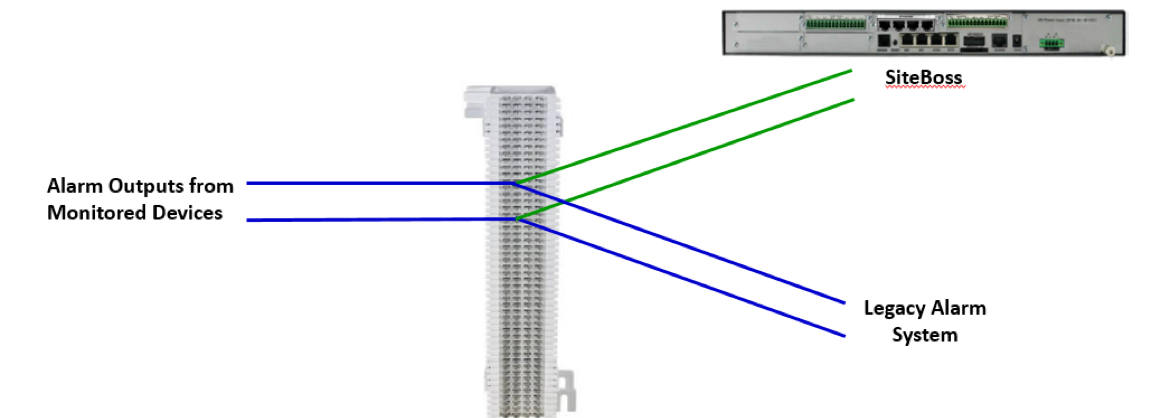Legacy Alarms and Solutions for a Simpler Migration

As telecommunications networks evolve, the equipment inside of cell site shelters evolves as well and in many cases, the existing equipment that handles the environmental alarming for the site becomes obsolete. Historically, alarms have been monitored through the transport equipment that also handles the CDMA or 4G LTE networks in a cell site, but as this equipment is replaced to pave the way for 5G, carriers are being left with a decision – Where should the alarms transition to next?
Many of the network equipment manufacturers have developed ways to continue to provide alarm monitoring through their systems; however, generation after generation of this process has left the alarming in many sites messy and confusing to look at. In a lot of cases it also adds a significant amount of time to the alarm migration in terms of physical work that needs to be done. Continuing with this process only affirms that at some point in the future, yet another migration will be needed.
To avoid these drawbacks, telecom carriers have begun exploring alternative alarm solutions that are independent of the type of network equipment in place. In doing so, the alarm setup in the site can become a permanent fixture that no longer needs to be considered during network equipment upgrades. Our Asentria SiteBoss products have a tremendous amount of flexibility to solve these problems in ways that can cut time and expense while also drastically increasing the level of remote visibility into other cell site systems including HVAC, generators, and DC power systems.


Our Approach to Dry Contact Alarms
By understanding the details of how today’s alarming systems work in a cell site, we have been able to capitalize on the modularity of our units to adopt solutions that can make transitioning as practical as possible. For starters, the design of our contact closures can allow customers the ability to use a “make then break” approach to migrating the alarms. This can be extremely beneficial in situations where it is preferable to temporarily keep alarms active through the existing legacy systems while testing SiteBoss functionality and integrating with a Network Operation Center (NOC). Alarm wiring to the SiteBoss can be paralleled into the existing systems with minimal wiring thanks to the internal circuitry of our dry contact inputs.

In some situations, one option to alarm a site through the SiteBoss is our “high-density” alarm card solution which can provide either 32 or 64 alarm positions through a single 66-block. The block is equipped with Amphenol connections that interface with our “Y-cable” to provide a single cable connection back to the SiteBoss. This solution eliminates a significant amount of space by condensing everything down to a single connection point.

Alarm pairs can also be wired directly to the back of the SiteBoss using a “low-density” 8 point alarm card. This solution cuts out the need for an alarm block or terminal strip altogether, drastically reducing the amount of labor involved in wiring the alarms in a cell site.

Both methods listed above can be great options for any situation; however, in an effort to further reduce the labor involved in migrating from legacy alarm systems, we have also developed solutions to interface with the existing wiring of those systems. This began with the 2017 release of our 16C alarm card which is equipped with RJ-45 jacks for alarm inputs and handles up to 16 alarms per card. This card was designed to match the pinouts for the LTE alarm equipment of several top network equipment providers to make migrating from these systems plug and play. This completely eliminates the need to rewire any alarms at the alarm block which can in turn save hours of work at each site.

The 16C card created further opportunities to develop solutions to interface with existing legacy alarm platforms. We began looking at how alarms connected to certain CDMA systems to see how we could continue to provide a means to eliminate the time consuming process of rewiring alarms at the alarm block. The first such solution came in mid-2018 when our “ALU CDMA Alarm Cable” was released. We closely examined how the Alcatel-Lucent 850 CDMA frames were connected to the alarm block and found that the cable from the alarm block utilized a DB-37 connection to plug into the CDMA frame. We were then able to develop a cable that could mate with this DB-37 connection and plug into a 16C card at the SiteBoss side. Thanks to this cable, decommissioning CDMA in a cell site can be faster than ever because, again, there is no need to rewire any of the alarm pairs at the alarm block.


The Future of Alarming In Telecom
As more and more changes come to the telecom industry, Asentria remains committed to finding solutions that can maximize savings in both cost and time. We are continuing to develop more and more solutions to interface with legacy alarm systems and are working very closely with our customers to determine their needs so that we can fill those gaps. Our goal remains focused on providing the most user friendly solutions with longevity in mind so that our systems will stand the test of time in the ever evolving world of telecommunication.
How can we help you evolve?
With our extensive line of products and solutions in place today, used by some of the world’s leading network service providers, we can help decrease costs and increase reliability by coming up with a solution that is a perfect fit for your network. Our vast knowledge of everything that must go on in the background make a telecom network possible, along with our willingness to tailor custom solutions to fit your specific needs, sets us apart from the competition in a way that many of our customers will swear by. Please take the time to browse our website to learn more about the products we have for monitoring and automation, and contact us with any questions that you may have.


